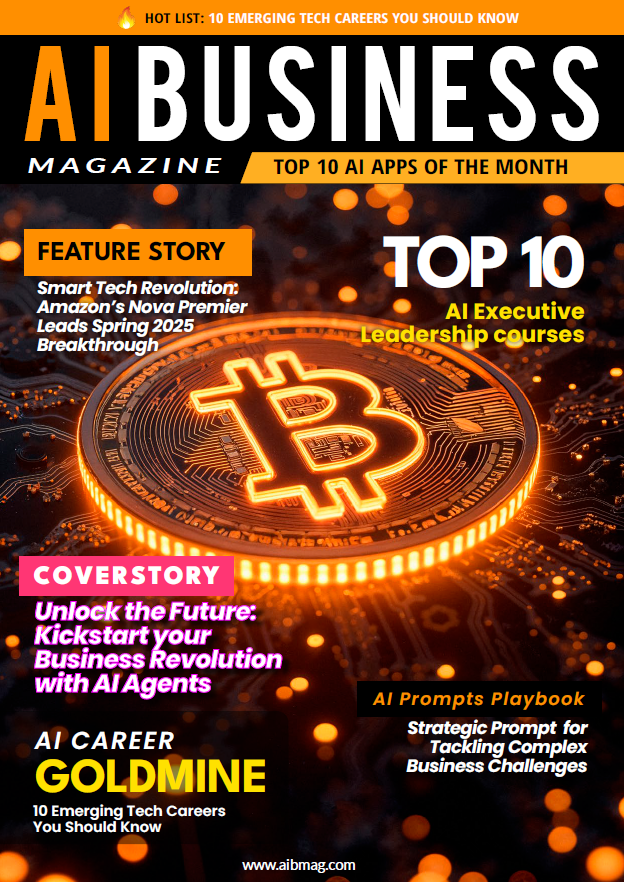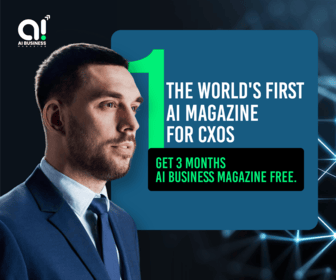Overview
Scene 1: The Bot That Knew the Back Office Better Than You
It began as a whisper.
In the corner of a bustling HR department at a European manufacturing firm, someone noticed the vacation approval workflow had mysteriously sped up. Elsewhere, procurement started receiving unusually accurate vendor suggestions without ever making a request. Finance, always skeptical of tech trends, quietly marveled as forecast accuracy climbed and cost anomalies flagged themselves.
No new software had been rolled out. No big consulting firm was onsite. And no internal emails had heralded a process overhaul.
But something had changed.
The culprit? Marvin.
Not a person but an internal generative AI agent, trained on the company’s historical data and integrated into backend workflows. Marvin didn’t greet you with a chatbot voice or wear a friendly avatar. He lived quietly behind forms and dashboards, reading patterns, learning the logic of the business, and making decisions in micro-moments.
What Marvin represents is not just a new tech deployment. He represents a seismic shift in how modern enterprises operate a shift toward embedded intelligence that doesn’t just support the business but subtly becomes the business. Stories like Marvin’s are becoming more common and increasingly covered by every emerging AI news channel vying to explain this quiet but sweeping revolution.
Scene 2: From Widgets to Wisdom
At SynGen Aerotech, a global parts supplier for the aviation industry, transformation didn’t start with a new AI initiative. It started with an old problem: warranty fraud.
Parts were being returned as faulty and claimed under warranty only to later show up refurbished and resold online. SynGen’s loss estimates ran into tens of millions annually. Their fraud investigation team had been playing a reactive, manual game of digital whack-a-mole.
Then came “Janus.”
Named after the Roman god of duality and foresight, Janus was a custom AI model designed by SynGen’s internal data science team. It didn’t just match serial numbers or detect duplicates. It inferred relationships, analyzed return patterns across geographies, flagged suspicious behaviors, and even suggested policy tweaks. By year’s end, warranty fraud losses were down 72%.
“Janus didn’t replace our team it empowered them,” says Anika Bose, SynGen’s Chief Transformation Officer. “They now spend less time investigating obvious stuff and more time rethinking how warranties are structured.”
This is the new AI playbook: not just detection, but prevention. Not automation for the sake of cost-cutting, but augmentation for long-term reinvention. Janus would easily qualify for any list of the top 10 AI products quietly reshaping how business is done at scale.
Scene 3: A New Brain for the Business
Unlike previous technology waves that were bolted onto existing structures ERPs, CRMs, BI dashboards this new era of enterprise AI is about building intelligence into the system’s very architecture.
Think of it like upgrading a nervous system.
Just as the human body coordinates movement, sensation, and reflexes through the brain and spinal cord, modern businesses are learning to do the same with AI — a centralized reasoning layer that integrates data from marketing, finance, operations, and HR, delivering coherent insights in real-time.
This is being quietly embraced across sectors:
- In banking, internal AI agents now simulate regulatory stress tests in real-time, adjusting portfolios in response to live news or geopolitical signals.
- In healthcare, AI tools trained on hospital logistics data help administrators optimize staffing and discharge planning, freeing up thousands of hours in nurse scheduling alone.
- In automotive, AI copilots suggest supply chain decisions based on weather forecasts, political instability, and social media sentiment.
The result? Organizations that think faster, adapt better, and, crucially, retain more institutional knowledge than any individual ever could. For small enterprises aiming to join this transformation, exploring the top 10 AI tools for small business is an actionable starting point.
Scene 4: The Quiet Race to Codify Expertise
One of the least appreciated but most strategic uses of enterprise AI is the codification of domain knowledge.
At a major insurance firm in Tokyo, leadership worried that its actuarial “brain trust” was nearing retirement. Years of underwriting knowledge, pricing nuance, and risk judgment lived in spreadsheets, PDFs, and people’s heads.
So, they built a generative AI model trained exclusively on internal actuarial documents, policy pricing decisions, and historical claims data. Now, junior underwriters use the tool to benchmark new policies against 20 years of precedent. It doesn’t just suggest numbers — it explains why.
This shift from siloed human experience to persistent machine memory is quietly redrawing the lines of competitive advantage.
In industries where experience used to take decades to accrue, AI can now replicate expertise in months provided the data is well-structured, the governance is strong, and the incentives align. It’s no surprise tools like these are being featured in curated lists like the 10 best AI tools now shaping business decision-making at every level.
Scene 5: Practical Implications – What You Need to Know
So what does this all mean for business leaders, teams, and employees trying to navigate this new terrain?
1. Your Data Is Now Capital
Forget real estate, IP, or even talent. In AI-enabled enterprises, the most strategic asset is proprietary, clean, and well-labeled data. This includes customer interactions, internal workflows, operational logs — anything that reflects how your company thinks and acts.
Companies not investing in data infrastructure today will find themselves unable to compete tomorrow — not because they lack the tools, but because they lack the training material for those tools to learn from.
2. Workflow Is the New Interface
Gone are the days when AI was something you interacted with through a chatbot. Increasingly, AI is becoming part of the workflow itself. Forecasting, hiring, compliance, customer service — it all flows through invisible logic layers where AI suggests, approves, or redirects action.
Understanding how these logic layers are built — and how to audit them — is now a key leadership skill.
3. Fusion Roles Are the Future
The jobs of the future won’t just be “AI engineers” or “prompt designers.” They’ll be hybrid thinkers people who understand the problem domain deeply and can communicate effectively with machines. Roles like:
- Compliance analyst + model validator
- Product manager + prompt strategist
- HR lead + behavior model evaluator
If you’re staying informed through resources like an AI magazine free to read and share, you’re already ahead of the curve.
Scene 6: The Ethical Middle Layer
But this power comes with new responsibilities.
When AI becomes part of the operational core making decisions that affect hiring, access to credit, or healthcare outcomes the margin for error shrinks dramatically.
To mitigate these risks, leading companies are establishing internal AI Ethics Councils made up of data scientists, legal experts, and business leaders. Their job isn’t just to ensure compliance it’s to continuously review whether AI outputs align with company values.
One global logistics firm recently shut down an internal routing model after discovering it consistently deprioritized deliveries to low-income ZIP codes. Technically, the model optimized for cost. Ethically, it failed the company’s equity standard.
The lesson? Optimization without context is a liability.
Scene 7: The Post-AI Organization
The most forward-looking companies are already reimagining themselves as “AI-native” where every process, decision, and customer touchpoint is enhanced by machine intelligence.
At a large global retailer, sales planning is now entirely AI-assisted. The model doesn’t just predict demand it tailors local promotions, suggests warehouse shifts, and even generates social media ads in the local dialect. It learns continuously from customer behavior and evolves its strategies weekly.
These AI-native organizations operate differently:
- Strategy is informed by simulation, not speculation.
- Teams are smaller but more specialized.
- Decisions happen faster and are more defensible thanks to traceable logic trees.
Importantly, this doesn’t mean the human element disappears. If anything, it becomes more critical guiding, interpreting, and questioning what the machines produce.
Scene 8: Where This Is Headed
Looking ahead, three major shifts are emerging that will define the next chapter of enterprise AI:
1. Autonomous Business Units
Imagine an AI agent that doesn’t just advise — it acts. It approves refunds, renegotiates vendor contracts, launches targeted campaigns. These agents are emerging now in customer service and procurement — and will soon expand across the enterprise.
2. Generative Enterprise Memory
Today, employees leave, and knowledge walks out with them. But future systems will automatically build “enterprise memories” — rich, AI-navigable knowledge graphs of everything the company has done, tried, and learned.
It’s like giving your company a perfect, searchable memory — across decades.
3. Ethical AI as a Competitive Differentiator
Just as sustainability moved from compliance to competitive advantage, ethical AI will become a boardroom priority. The companies that win trust — from regulators, customers, and talent — will be the ones that build explainable, transparent, human-centered AI systems.
Scene 9: The Last Human Advantage
There’s a lot of fear surrounding AI — that it will replace jobs, flatten creativity, or remove empathy from human systems.
But what’s emerging is more nuanced.
Yes, AI will change work deeply and permanently. But in doing so, it will elevate the value of skills that are uniquely human: judgment, empathy, ethics, context.
In a world where models can write reports, run forecasts, and automate workflows, what still matters is asking the right question. Knowing when to trust the model and when to override it. Connecting data to meaning, outcomes to values.
In short: the last competitive advantage may be distinctly human.
Final Word
As the dust settles from the initial AI hype wave, we’re left with something far more powerful and far more quiet.
Not chatbots or viral art generators. But decision engines. Context machines. Intelligent infrastructure woven so tightly into the enterprise that you forget it’s there.
Tools like ChatGPT are no longer just conversational interfaces—they’re becoming embedded layers of intelligence, powering workflows, surfacing insights, and augmenting decisions in real time.
And that may be the most profound change of all.
Because when intelligence becomes invisible embedded into the very logic of the business that’s not just transformation.
That’s evolution.



